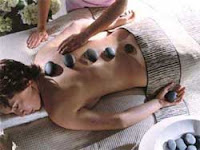Acta Biomater. 2009 Jun 5; Reza AT, Nicoll SBBack pain is a significant clinical concern often associated with degeneration of the intervertebral disc (IVD). Tissue engineering strategies may provide a viable IVD replacement therapy; however, an ideal biomaterial scaffold has yet to be identified. One candidate material is carboxymethylcellulose (CMC), a water-soluble derivative of cellulose. In this study, 90 kDa and 250 kDa CMC polymers were modified with functional methacrylate groups and photocrosslinked to produce hydrogels at different macromer concentrations. At 7 days, bovine nucleus pulposus (NP) cells encapsulated in these hydrogels were viable, with values for the elastic modulus ranging from 1.07 + 0.06 to 4.29 + 1.25 kPa. Three specific formulations were chosen for further study based on cell viability and mechanical integrity assessments: 4% 90 kDa, 2% 250 kDa, and 3% 250 kDa CMC. The equilibrium weight swelling ratio of these formulations remained steady throughout the two-week study (46.45 + 3.14, 48.55 + 2.91, and 42.41 + 3.06, respectively). The equilibrium Young's modulus of all cell-laden and cell-free control samples decreased over time, with the exception of cell-laden 3% 250 kDa CMC constructs, indicating an interplay between limited hydrolysis of interchain crosslinks and the elaboration of a functional matrix. Histological analyses of 3% 250 kDa CMC hydrogels confirmed the presence of rounded cells in lacunae and the pericellular deposition of chondroitin sulfate proteoglycan, a phenotypic NP marker. Taken together, these studies support the use of photocrosslinked CMC hydrogels as tunable biomaterials for NP cell encapsulation.



